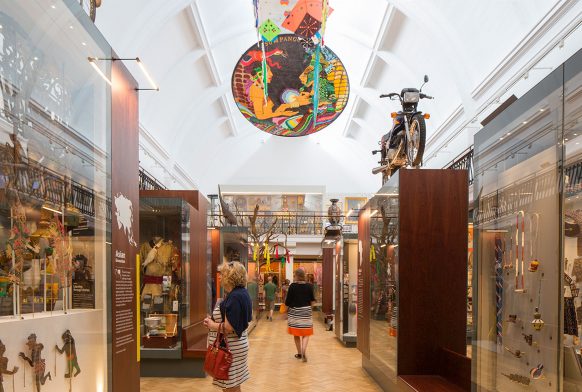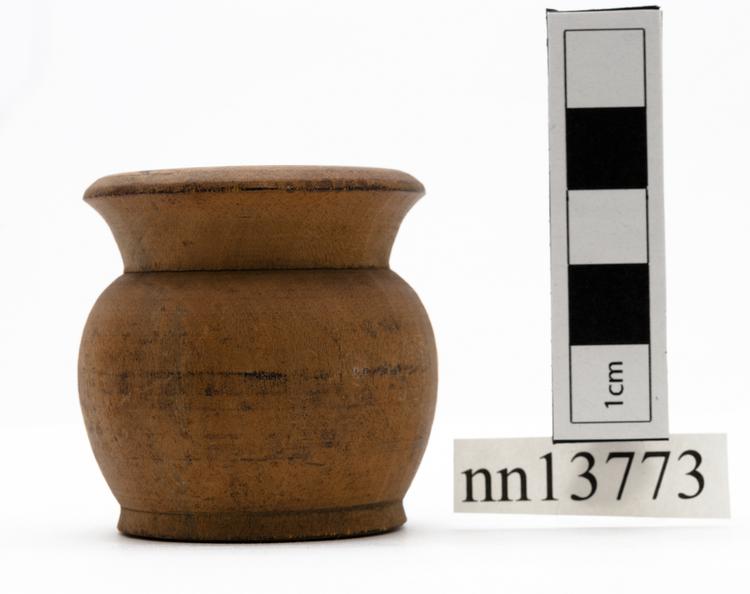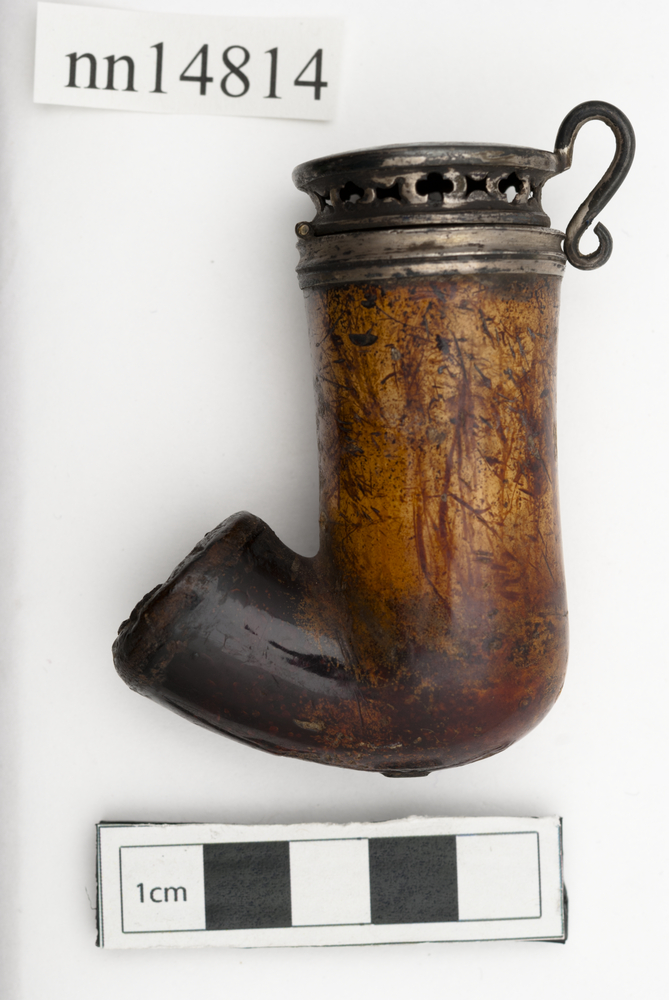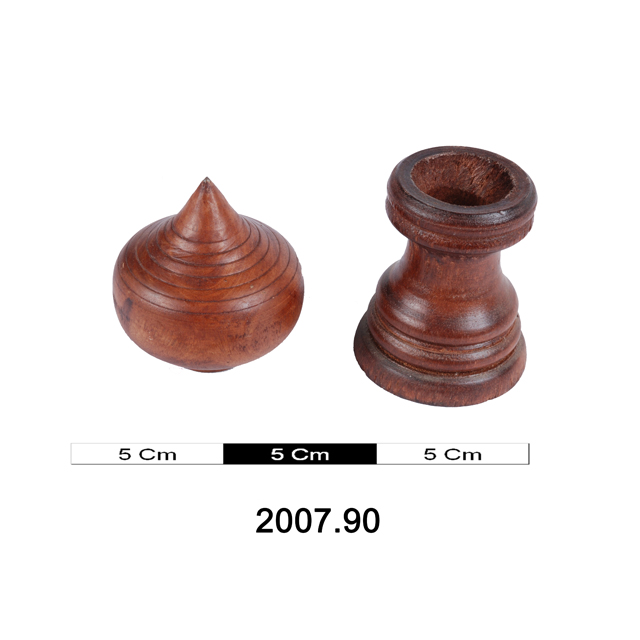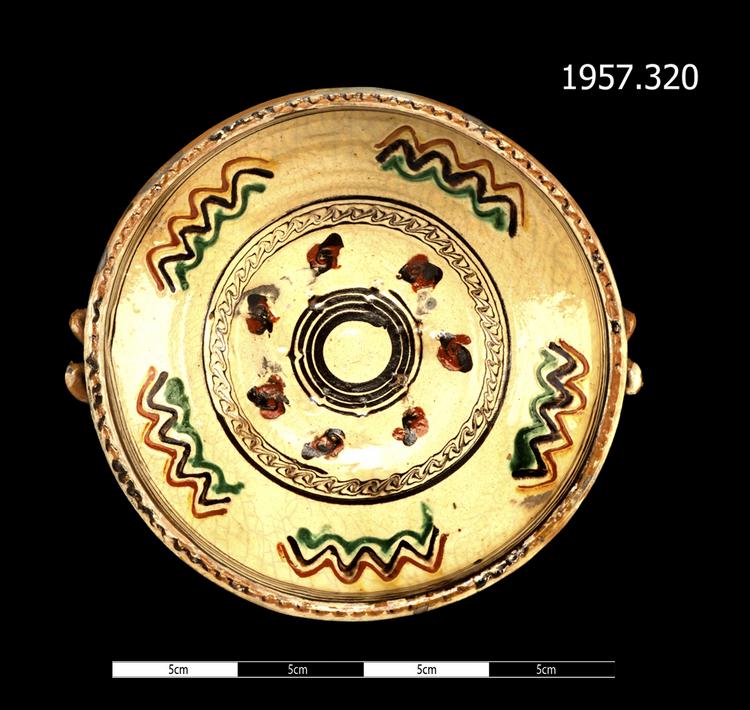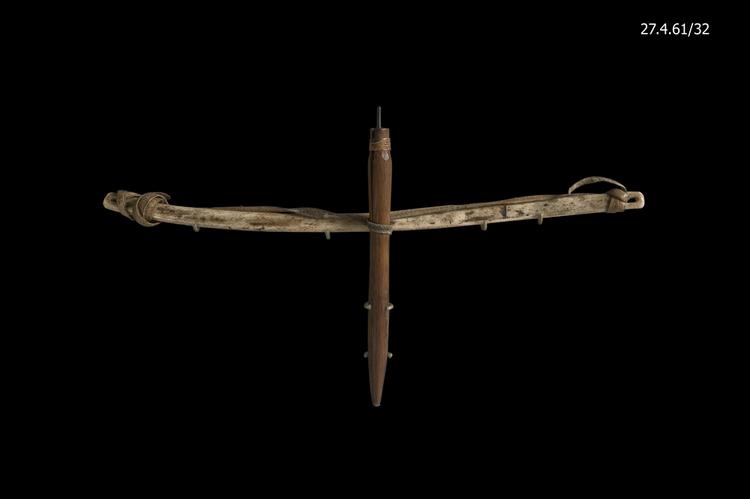




Bow drill consisting of a bow cut from a walrus tusk, rectangular in section but pointed at one end with a mammal's head at the other, the eyes highlighted with inlaid blue beads. It is decorated on all four faces with engraved scenes of walrus, reindeer and other hunting scenes. The tail end has parallel grooves where the drill is circular in section. There are perforations at either end, with a length of twisted sinew cord forming the bow string.
Collected by the expedition of Captain James Cook in 1778 or 1779 probably on the Russian side of the Bering Strait (East Cape), though it may possibly have been made by an Inupiaq person perhaps living on the Alaska side. There was a significant amount of indigenous trade across the Bering Strait, and similar bow drills were obtained in the 19th century from Alaska. David Samwell said in his diary for August 10 1779, referring to the Chukchi inhabitants of St Lawrence Bay, Siberia: 'We bought some curious Articles of them, among which were small pieces of Ivory with the Images of dogs & rein Deer drawing Sledges & very ingeniously executed' (Beaglehole 1967 vol 3: p 1133) . This is probably a reference to the bow drill. Ray suggests that these items were probably imports from Alaska on the grounds that Vladimir Bogoras, the foremost ethnographer of the Chukchi, wrote in 1907 that 'etchings are scarce in Asia, and those that I had the opportunity to observe are comparatively poor spcimens of art' [Bogoras 1907:295]. Given the enormous time gap Ray's conclusion is illogical and since the evidence points to a Siberian origin it seems appropriate for the Horniman to classify the bow as Chuckchi. Amber Lincoln points out that this drill is particularly interesting because of its depiction of three Chukchi warriors, (of Chukotka on the Russian side). They are wearing their birch bark and sealskin armor (see Fitzhugh and Crowell 1991: 227 for an example of this armour). Ray writes: ‘The first drill bow collected by a European was obtained in 1778 by James Cook’s expedition and illustrated by John Pennant in 1784. The images appearing on this piece are quite similar to those on later drill bows. The origins of this form of narrative engraving are not yet known.’ (Figure 312 (p 256), in William W. Fitzhugh and Susan Kaplan’s Inua: Spirit world of the Bering Sea Eskimo). The drill bow is illustrated in Thomas Pennant's 'Arctic Zoology' 1784 (see below) with the caption, 'The place it came from is uncertain; but doubtlessly from the part of the western coast of America frequented by the walrus.' Amber Lincoln supplied the following bibliography of the drill’s citations: Fitzhugh, W. W., and A. Crowell. 1991. Crossroads of Continents: Cultures of Siberia and Alaska. Washington, DC: Smithsonian Institution Press. Pennant, Thomas. 1784. Arctic Zoology. London: Henry Hughes, (illustrated on pl. 6, p. 144). Ray, D. J. 1961. Artists of the Tundra and the Sea. Seattle: University of Washington Press. —. 1982. "Reflections in Ivory," in Inua: Spirit world of the Bering Sea Eskimo. Edited by W. W. Fitzhugh and S. A. Kaplan, pp. 255-267. Washington, D.C.: Smithsonian Institution Press. —. 2003. "Happy Jack and Guy Kakarook: their art and their heritage.," in Eskimo Drawings. Edited by S. Jones, pp. 18-33. Anchorage: Anchorage Museum of HIstory and Art.



